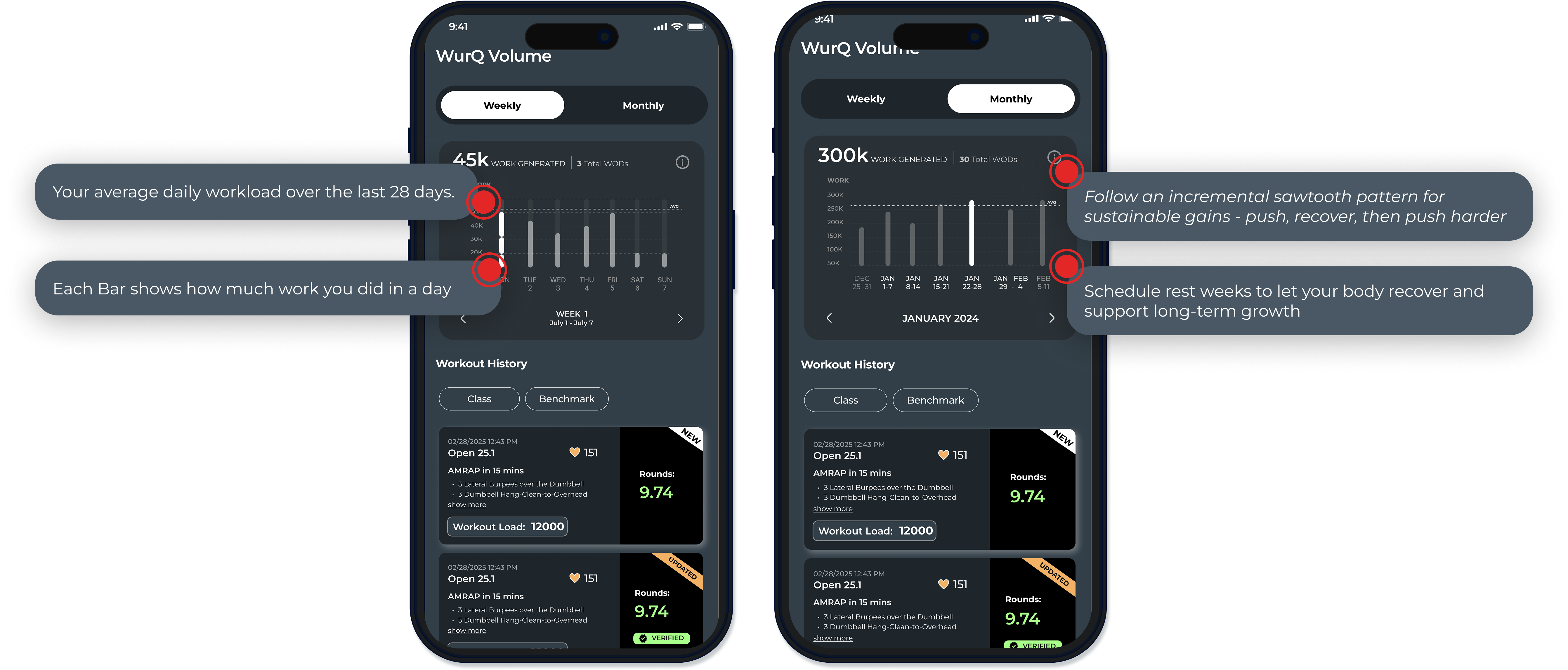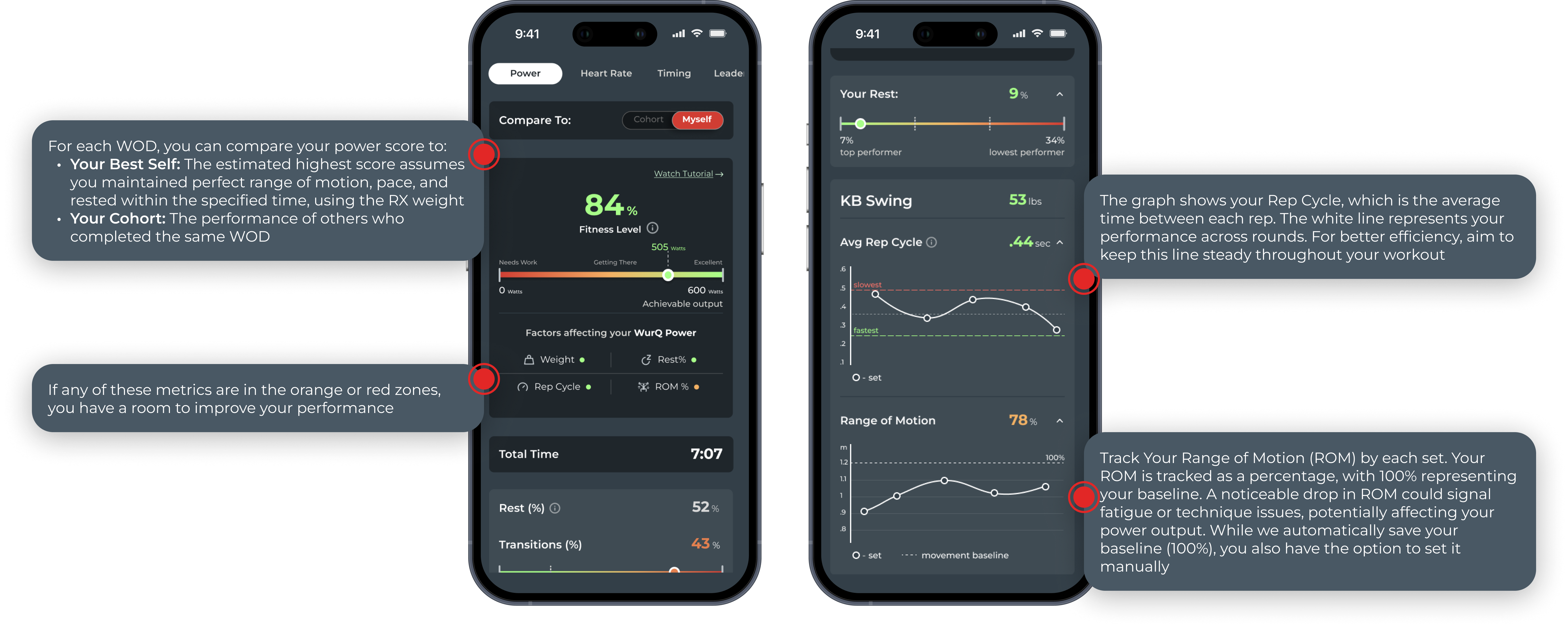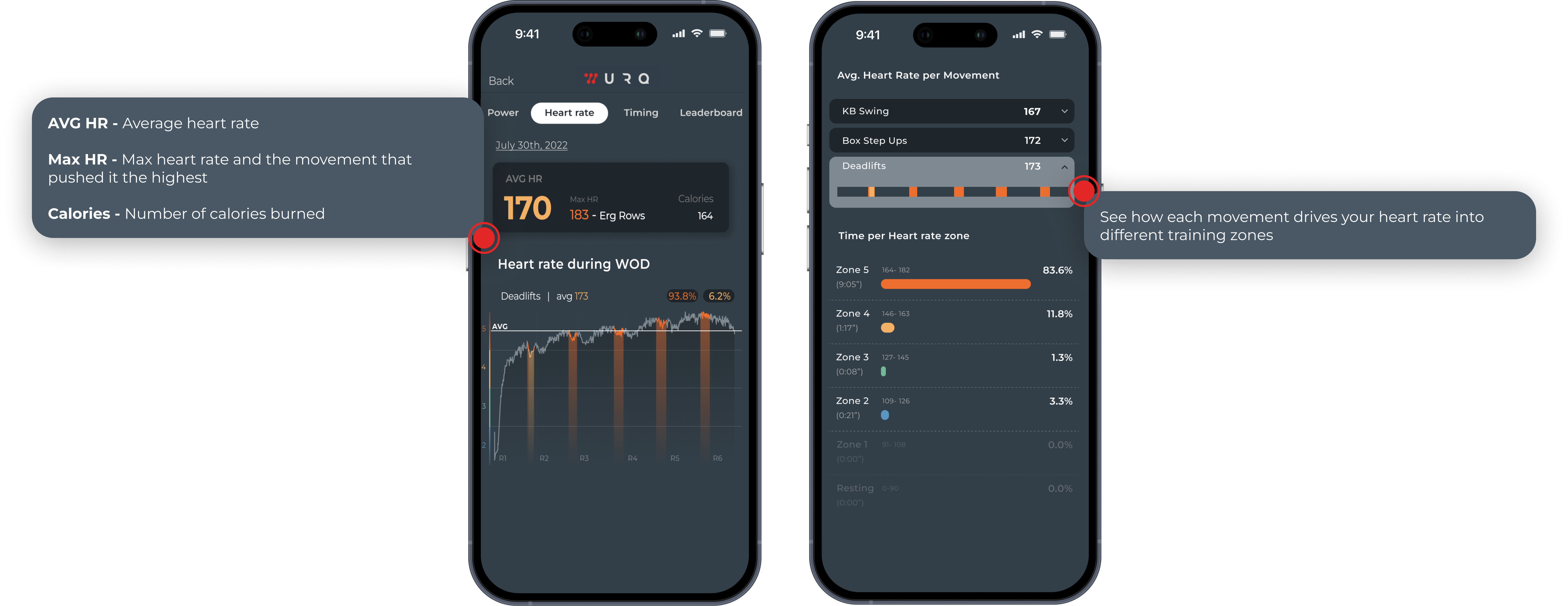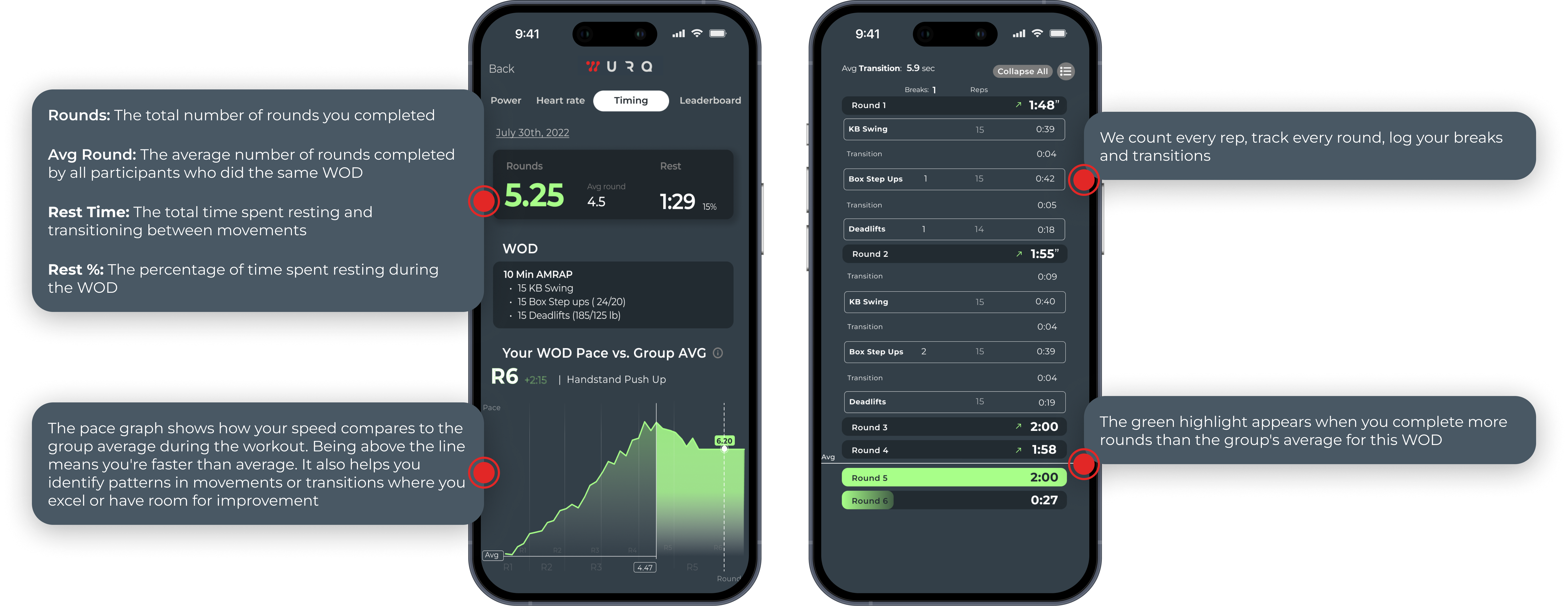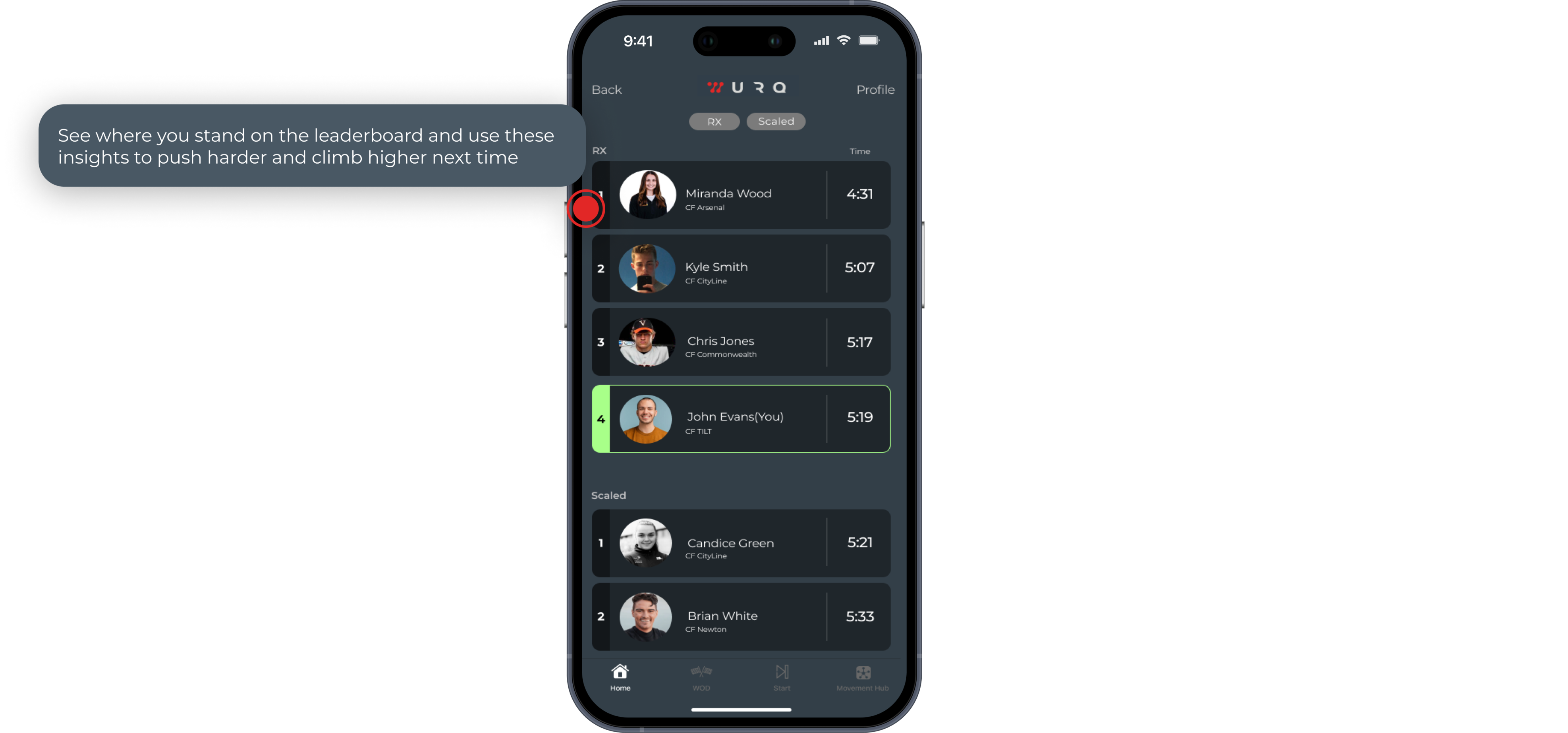Intelligent Movement Tracking
The WurQ system is equipped with a movement sensor called Inertial Measurement Unit (IMU), which measures acceleration, orientation, and magnetic fields. We then process these signals to map how your body moves in 3D space.
The WurQ team has collected thousands of movement patterns across diverse groups of athletes to refine exercise recognition, and the system was tested at the Harvard Motion Capture Lab to evaluate its accuracy.
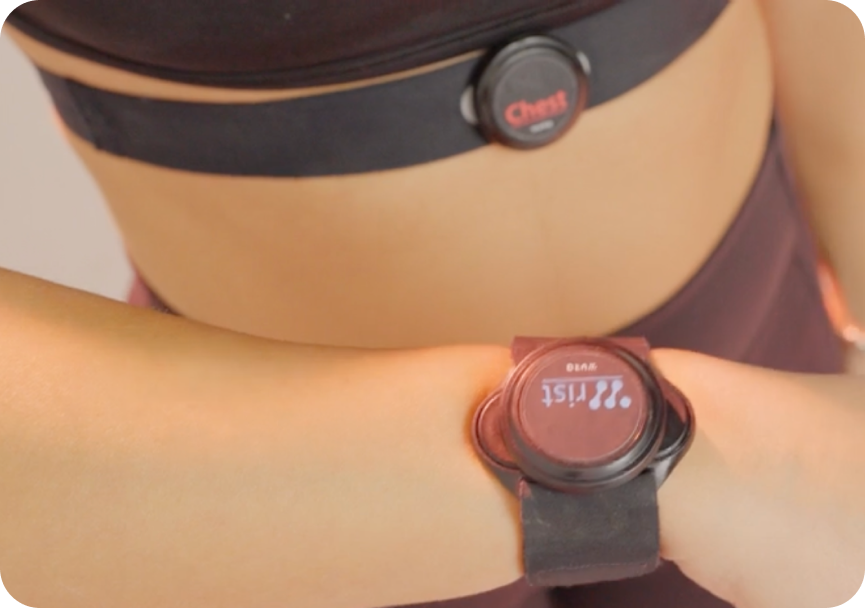
The chest sensor tracks heart rate using ECG and monitors your trunk movement to measure the work performed.
The wrist sensor tracks your movement during lifting weights, helping analyze your performance and technique.
But Why Two Sensors?
WurQ leverages advances in AI and computation to automatically recognize movements, extract kinematic metrics, and provide performance insights.

Comprehensive Kinematics & Critical Body Points:
When lifting weights, it’s essential to monitor the trajectory and speed of the wrist to assess performance metrics such as work volume, power output, range of motion, and rep cycle. In gymnastics, where the body trunk acts as the primary weight, tracking its displacement in space is key to evaluating movement efficiency.

Advanced AI-Powered Movement Recognition:
By incorporating multiple reference points (e.g., chest and wrist), our models can detect subtle variations in movement, offering more accurate recognition and a broader range of detectable exercises. WurQ’s library of movements continues to expand, enhancing its capability.

Heart Rate Monitoring by Individual Movement:
While popular smartwatches are improving wrist-based heart rate monitoring, nothing matches the accuracy of a sensor placed near the heart. With WurQ, you can combine exercise recognition with precise heart rate data, broken down by individual movements.
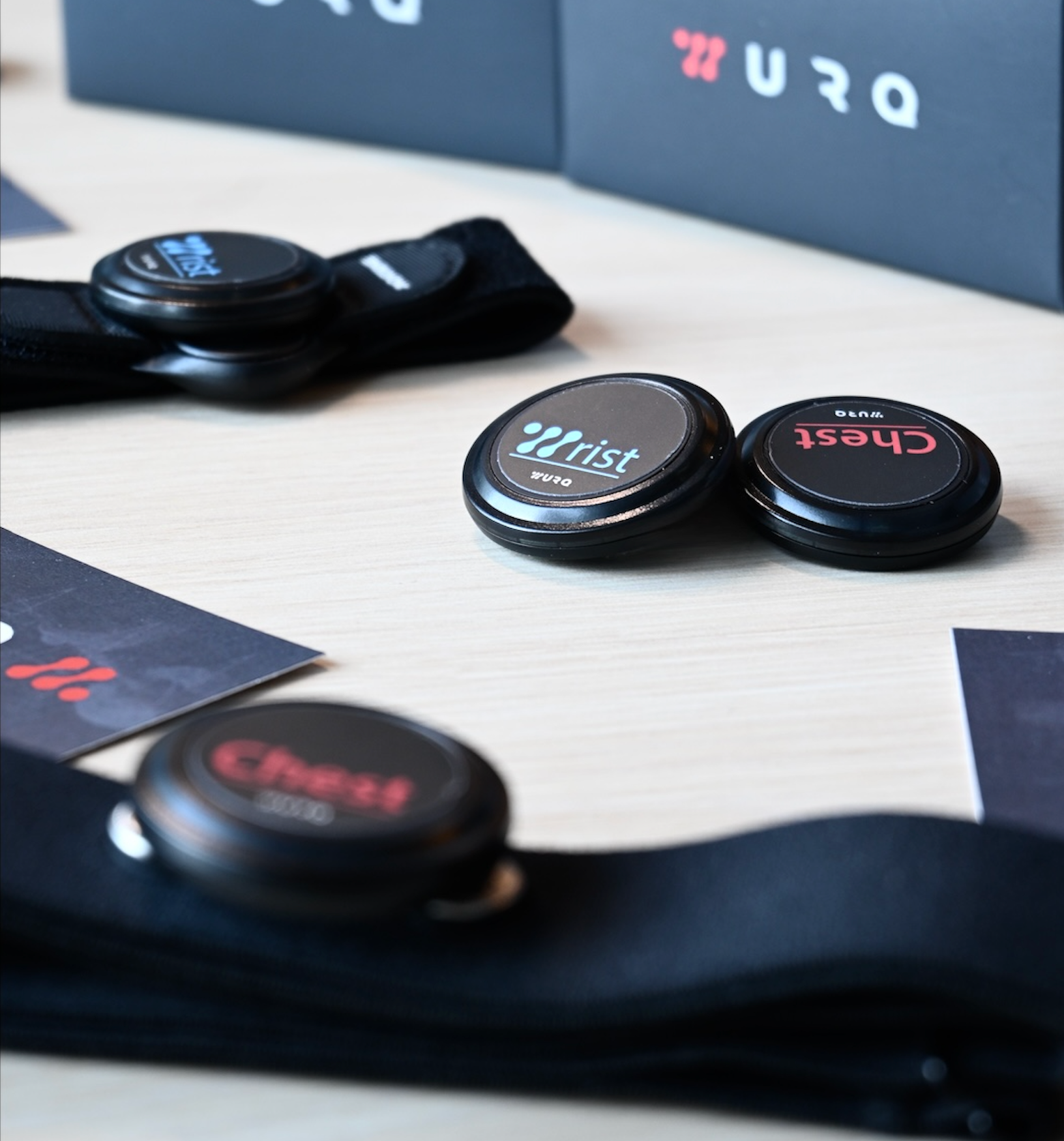
Dive Into Your Data
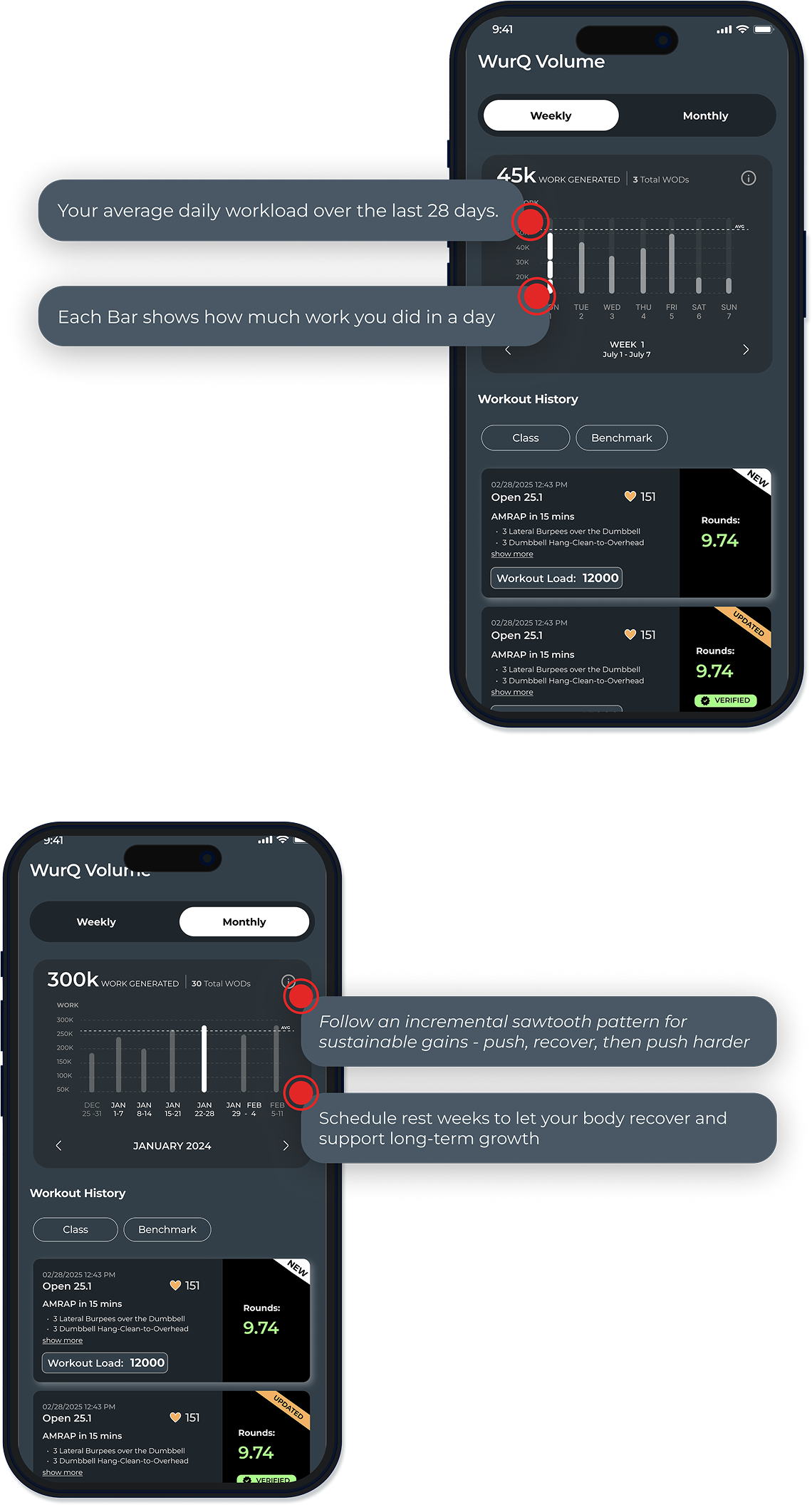
Balance Your Workload to Train Smarter
Workload is the total physical work your body does across sessions. WurQ rolls every session into daily bars, a 7-day load, and a 28-day average so you can balance your training instead of guessing. Use Weekly to check day-to-day consistency; use Monthly to watch steady growth. Aim to keep your 7-day load within about 20% of your 28-day average and build roughly 10% at a time. If you see a spike or dip, open the day to see which movements drove it, then adjust volume or rest to stay progressing.
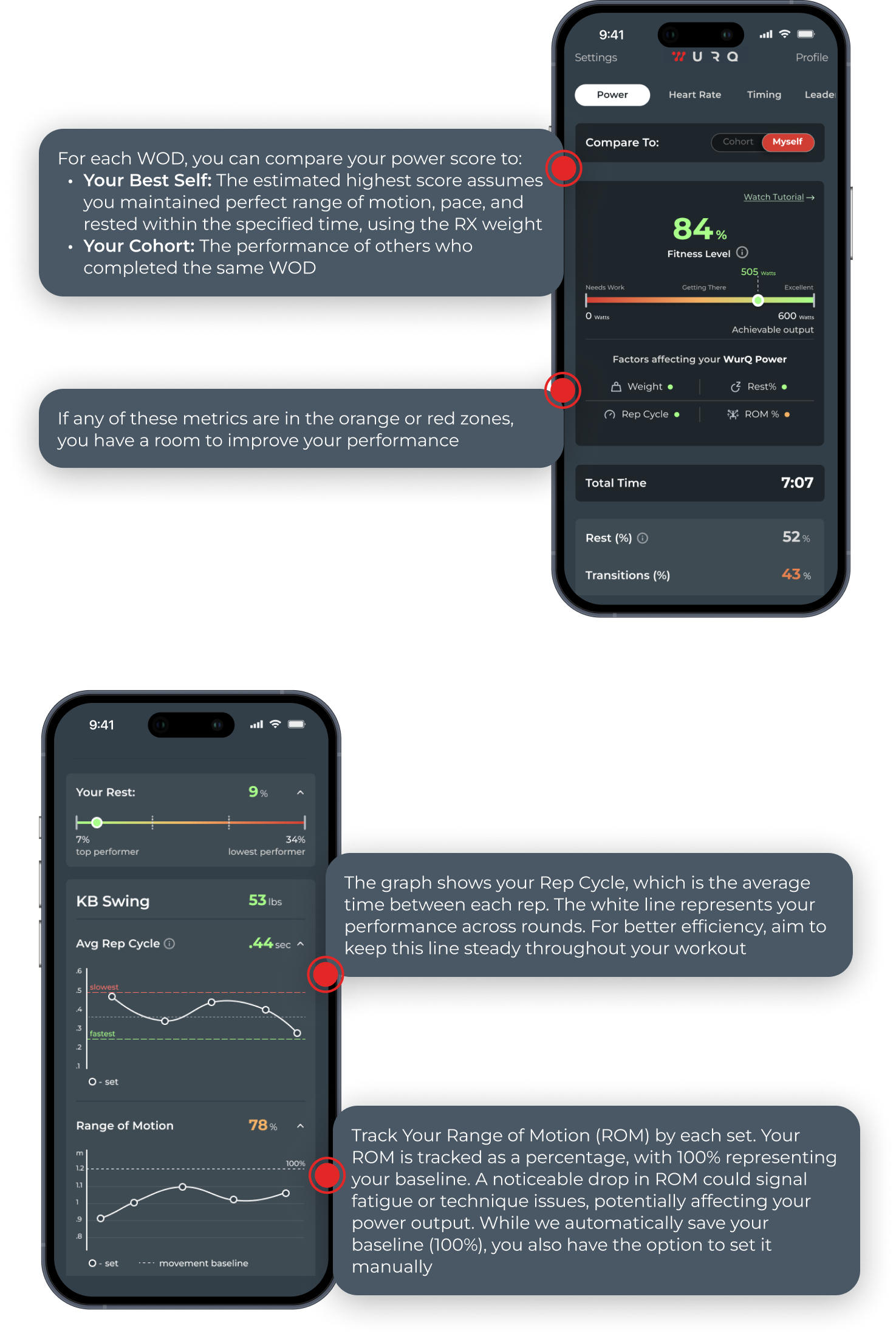
Improve your Power production to Boost Wellness and Performance
Think of your body as an engine—we measure its power output across various time and movement domains. Power = Work/Time. The more power you are able to produce, the more work you can do in the same amount of time. How do I use the power score? Assess your performance by comparing it to other athletes who completed the same WOD or against your estimated best self. If you’re in the green zone, you performed well! If you’re in the orange or red zones, take a closer look at the factors that caused the power drop: reduced range of motion or rep cycle for one of the movements, or extended rest?
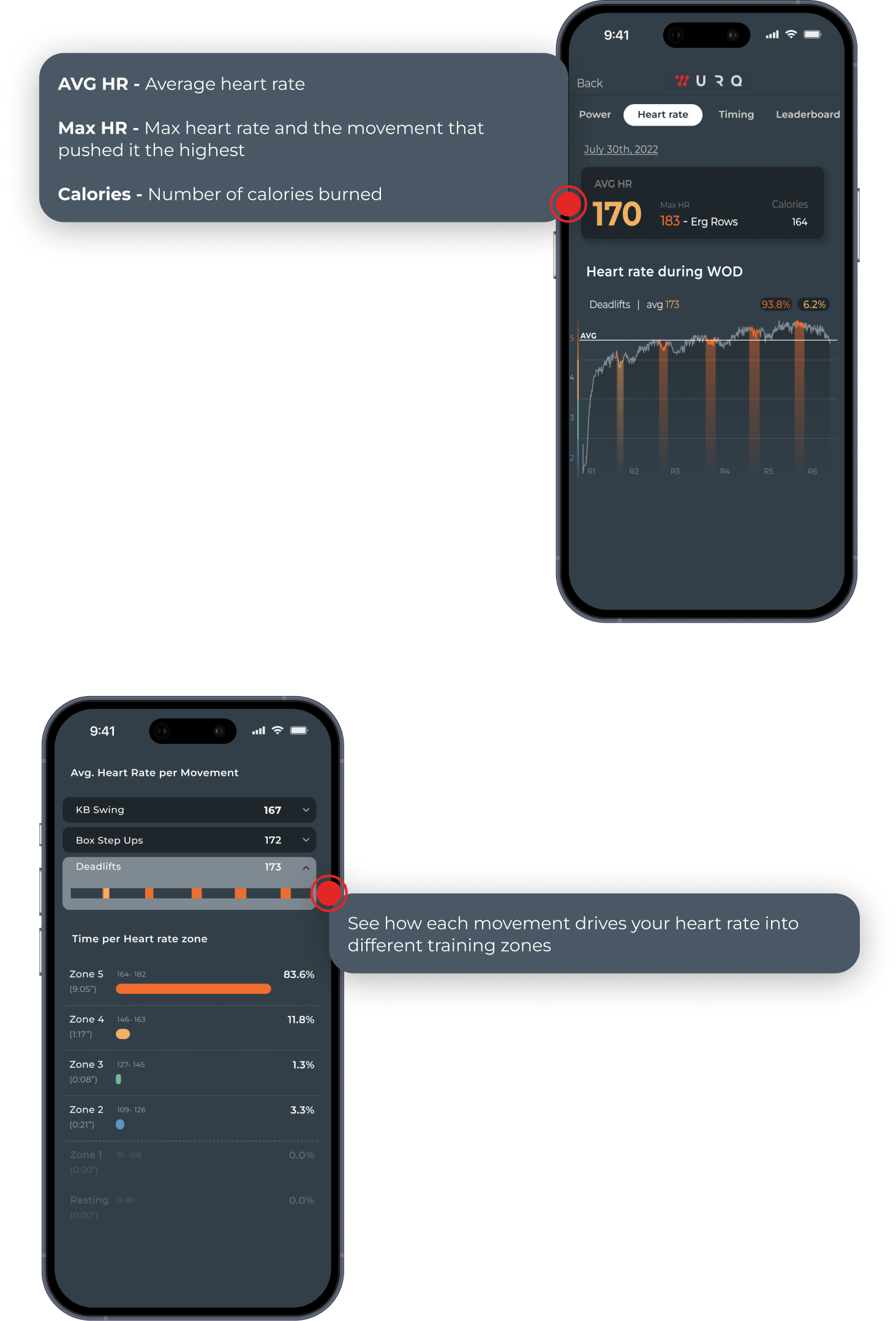
Dive Into Heart Rate Insights for Every Movement
With WurQ, you get precise heart rate metrics for every second of your workout. Drag through the timeline to discover which movements spiked your heart rate and which were less demanding. Plus, see how much time you spent in each heart rate zone.
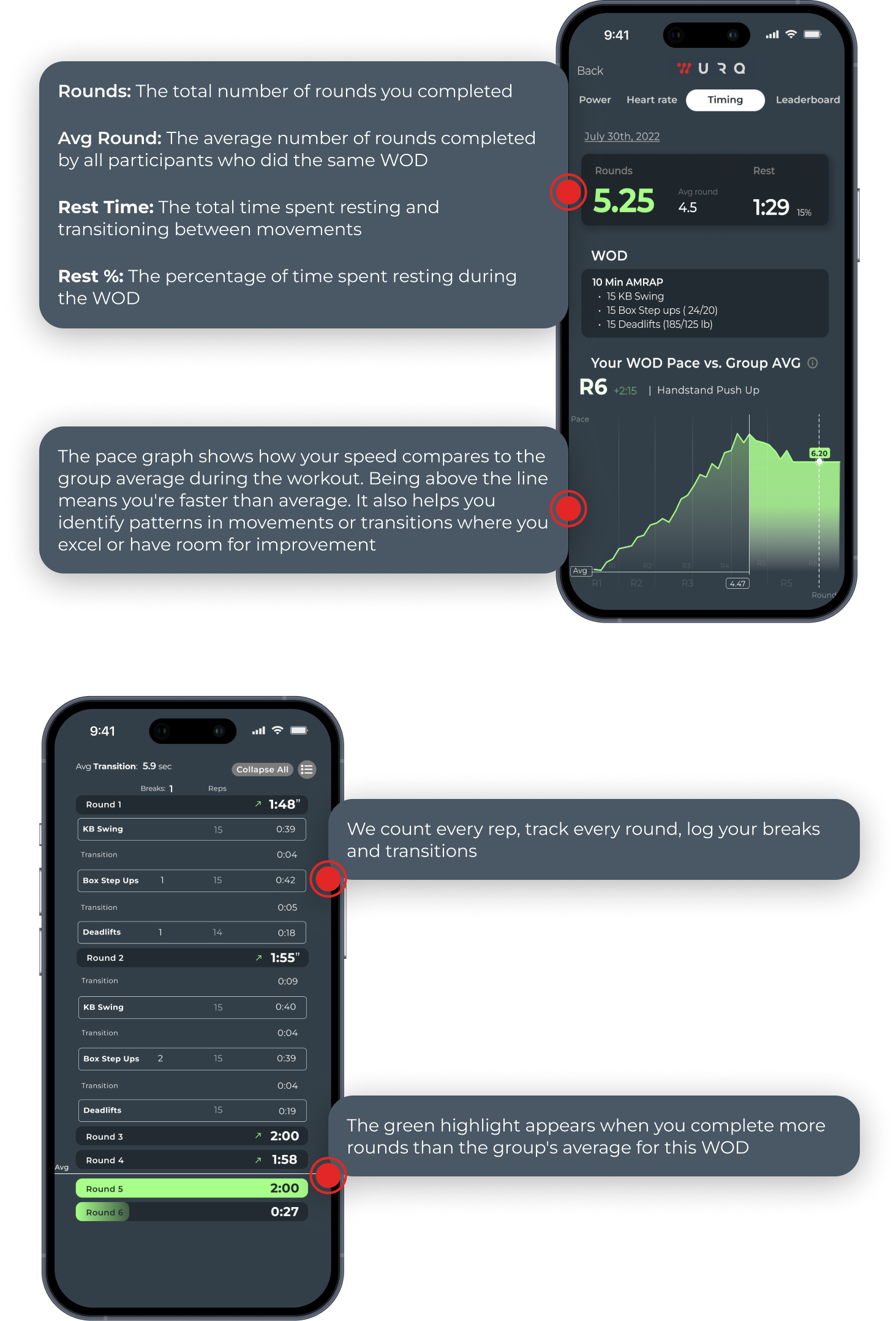
Automatic Movement Detection In The Palm Of Your Hands
Say goodbye to manually logging your WOD! We automatically recognize every exercise, count reps, highlight transition times, and log breaks.
No more relying on the whiteboard or manual input to see who had the fastest time or the most rounds in your class. Plus, we go further by showing you exactly where you gained or lost your lead, second by second.
No more relying on the whiteboard or manual input to see who had the fastest time or the most rounds in your class. Plus, we go further by showing you exactly where you gained or lost your lead, second by second.
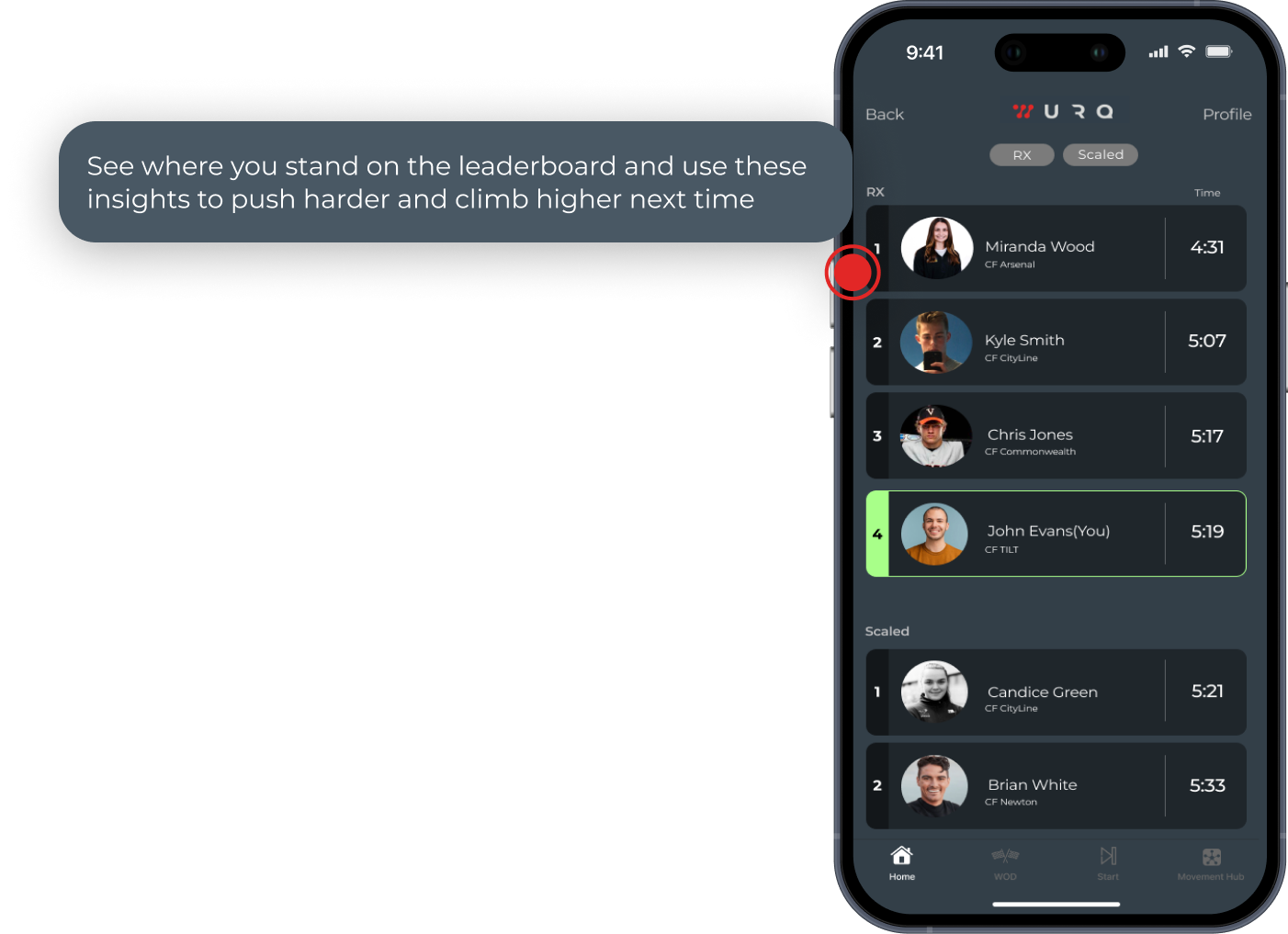
Compete With Friends
The WurQ leaderboard lets you see where you rank against others who completed the same workout. Separate leaderboards are available for those who did Rx and scaled versions.


